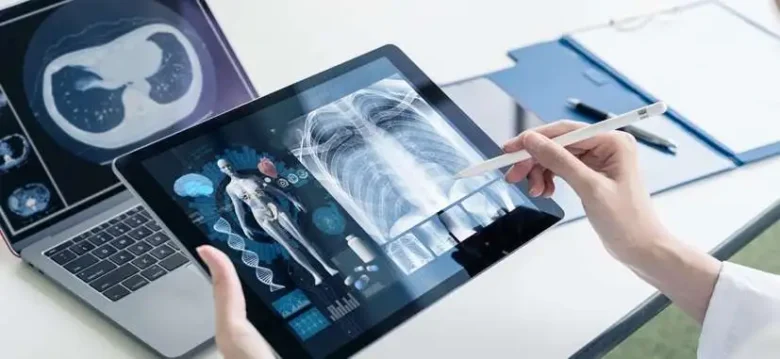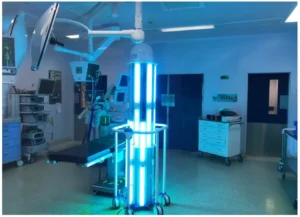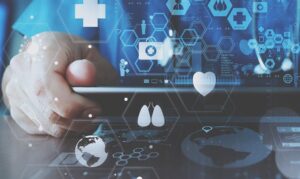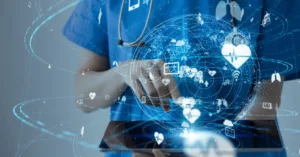Medical technology is a broad field that includes instruments, machines, and systems that doctors use to diagnose patients, administer treatments, and monitor their health. It is essential to modern healthcare because it improves the quality of care, increases efficiency, and detects diseases early. From simple thermometers to high-tech MRI scanners, medical technology is ubiquitous in healthcare. It has changed the way we think and care about our health.
How Medical Technology Has Evolved Over Time
Medical technology has been around for thousands of years. Medical instruments used to be simple and often made of wood, stone, or metal. As scientists gained more knowledge and created new materials, these technologies underwent evolution over time. The invention of the microscope in the 17th century made it easier to understand diseases. The 19th and 20th centuries saw numerous breakthroughs in medicine, such as the stethoscope, x-rays, vaccines, and antibiotics. Digital technology, artificial intelligence, and robotics are driving the next wave of innovation in medical technology.
Different Types of Medical Technology
Depending on its use, we can divide the distribution of medical technology into several categories. Blood tests, imaging tools such as CT scans and ultrasound, and wearable devices that monitor heart rate or blood oxygen levels are all diagnostic technologies that help doctors diagnose a patient’s condition. Surgical instruments, dialysis machines, and laser therapy are all therapeutic technologies used to treat diseases. Monitoring devices can monitor a patient’s vital signs at all times. Assistive technologies, such as hearing aids and prosthetics, can improve the lives of people with disabilities. Each technology plays a different role in healthcare.
The Role of Medical Technology in Hospitals
Hospitals rely on medical technology to provide accurate and rapid care to patients. Technology helps doctors and nurses provide fast and effective care. For example, electronic patient records store patient data, and ventilators help patients breathe in intensive care units. Automated laboratory systems speed up diagnosis, while robotic surgery makes procedures more precise and less invasive. Medical imaging technology provides doctors with important information about internal organs and tissues, allowing them to make faster and more accurate diagnoses. Overall, these tools help improve safety, reduce errors, and lead to better treatment outcomes for patients.
Medical Technology for the Home
Medical technology isn’t just for hospitals and clinics. Today, people can take care of their health at home using a variety of tools. Blood pressure monitors, diabetes glucose monitors, and wearable fitness trackers are examples of medical devices that anyone can buy. Telemedicine platforms are becoming increasingly popular because they allow people to communicate with their doctors via video chat without leaving their homes. These technologies provide people with the tools they need to monitor their health, adhere to treatments, and detect early warning signs. As healthcare models shift to a patient-centric approach, home healthcare technology is becoming increasingly important.
Impact on Disease Management and Prevention
One of the most important roles of medical technology is in the prevention and treatment of disease. Mammograms and colonoscopies are examples of early detection technologies that can detect malignancies before they become fatal. Vaccination methods have eliminated or controlled several deadly diseases, such as polio and meat contamination. Medical apps and wearables can help people live better by showing how their health changes over time and enabling early intervention. Monitoring and medication technologies allow people with chronic diseases such as diabetes, asthma, and hypertension to better manage their conditions and prevent problems.
Innovation and Future Trends
Medical technology is changing every day. New technologies are changing the future of healthcare in exciting ways. Artificial intelligence is being used to analyze medical data, predict the likelihood of disease, and recommend the right treatments. Robots are making surgeries more precise and performing routine tasks. 3D printing is being used to create custom prosthetics and even human tissue. Gene editing and personalized medicine are making it possible to treat genetic diseases in innovative ways and give each patient the treatment they need. The goal of these new ideas is to make healthcare more accurate, affordable, and accessible.
Problems with Medical Technology
Medical technology offers many benefits, but it also has some problems. High prices make it difficult to access advanced technology, especially in low-income areas. There are concerns about data privacy and cybersecurity, especially as more people use digital health records and connected devices. Sometimes, overreliance on technology can make communication between patients and healthcare providers difficult. In addition, teaching healthcare professionals how to use new technologies effectively remains a challenge. Regulatory approval and testing can also slow the introduction of new technologies. While such approval ensures the safety of new technologies, it also hinders their development.
What Healthcare Professionals Do
Technology can help healthcare, but it cannot replace the knowledge and skills of doctors, nurses, and other medical professionals. These experts know how to read machine data, make informed choices, and provide compassionate care. Technology is not a replacement for their work but a tool to help them do their job. To ensure that medical devices are used safely and effectively, they must be properly trained. Engineers, scientists, and clinicians must work together to ensure that new technologies truly meet the needs of patients and their caregivers.
Conclusion
Modern medicine relies heavily on medical technology. From simple devices to complex machines that use artificial intelligence, it helps diagnose, treat, and prevent disease more than ever . It gives healthcare professionals more tools and patients more control over their health. As the medical field evolves, it will lead to better medical outcomes, patient safety, and quality of care. But to ensure that medical technology benefits everyone, we need to address issues such as cost, accessibility, ethics, and education. Even novices can grasp how medical technology works and how it will affect their lives and healthcare.
FAQs
1. What are the new developments in medical technology?
Wearable health monitoring, AI diagnostic tools, robotic surgical systems, 3D-printed prosthetics, and personalized treatments based on genetic testing are some of the latest developments.
2. What are the challenges of using medical technology?
Some of these challenges include high cost, unequal access, data privacy concerns, the need for adequate training, and ethical issues around automation and obtaining patient consent.
3. Will robots replace doctors in the future?
Robots and artificial intelligence can do a lot of medical work, but they may not be able to replace doctors completely. Human judgment, empathy, and experience are still crucial in healthcare.
4. Is it safe to use medical technology?
Medical technology is generally safe when it is properly reviewed, approved, and used by knowledgeable people. Regulatory agencies ensure that new devices are safe and work well.
5. How can I learn more about medical technology?
You can learn more by visiting reputable health websites, joining medical technology associations, taking academic courses, or talking to healthcare experts about the technology they use to help people.




